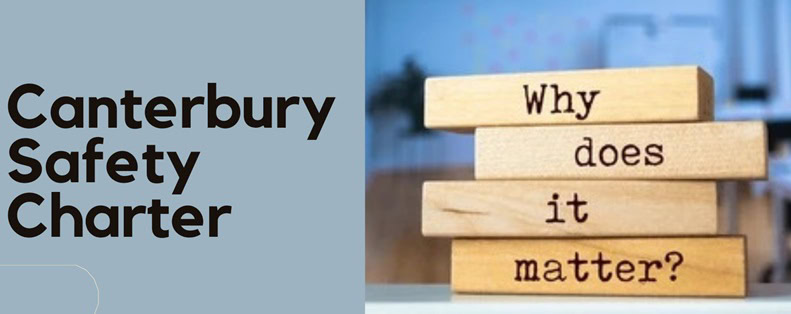The Canterbury Safety Charter

The Canterbury Safety Charter
… Why does it matter?
The Safety Charter is unique. There is no other organisation quite like it. It fills a small gap between the government agencies responsible for workplace health, safety, and wellbeing, and the organisations who try to sell you products and services around the same. The Charter is independent of both and attempt to engage and connect our members to improve their capability and responsibility to their fellow employees. It was built on collaboration, and a place to go to for help without fear of repercussion or someone trying to sell you something. Our members range from ‘a man in a van’ to large Tier one construction companies. We have designers, engineers, vertical and horizontal contractors, local and regional councils, government departments, and health and safety professionals.
Why does the end of the Safety Charter matter? The answer is very simple. Because it worked and continued to work long after the rebuild had been completed. And there is still a lot of work to be done.
The Safety Charter was a key component of WorkSafe’s Canterbury Rebuild Program, which has proven its effectiveness in achieving its intended outcomes. The evaluation of the program found that the initiative was largely implemented as planned and achieved most of its short- and medium-term goals. This has translated into tangible improvements in workplace safety. Over a four-year period, the programme is estimated to have prevented several fatalities, many severe injuries, and a lot more less severs ones.
The financial case for continued funding of the Safety Charter is also compelling. The cost: benefit ratio for the programme was estimated at between 1:3 and 1:6, indicating that for every dollar invested, the return in terms of prevented injuries and associated costs was three to six times greater. This demonstrates that the Charter is not just effective in improving safety, but also provides real value for public funds. In this time of reduced government budgets, initiatives that deliver such strong returns on investment should be prioritised for continued support.
One of the Safety Charter’s key strengths has been its ability to engage industry leaders and foster a collaborative approach to improving safety. By allowing the industry to lead while providing crucial support, the Charter has created a sense of ownership and commitment among construction businesses. This industry-led model has proven effective in driving real change in safety practices and culture. The evaluation found evidence of increased awareness of health and safety obligations and improved practices among Charter signatories.
The success of the Safety Charter model in Canterbury suggests it could have valuable applications in other regions or major construction projects across New Zealand. By continuing to fund and refine the Charter, the government would be investing in a proven model that could be adapted and applied to improve construction safety nationwide.
While the Safety Charter has made significant progress, there are areas where continued funding could allow for further improvements. Worker engagement, SME’s, recovery at work, wellbeing, BIM training for health and safety managers are all areas that the Charter have identified as needing some attention. Continued funding would allow for the development and implementation of more effective strategies to involve workers at all levels in safety initiatives.
The Canterbury Safety Charter has demonstrated its value through very real improvements in workplace safety, strong financial returns, effective industry engagement, and the promotion of a positive safety culture. It leaves a legacy of resources and collateral which will have a long-lasting benefit to all New Zealanders. We plan to go out on a high, with the ‘Future of Health and Safety Conference’ providing a forum for leading the way into the next several years. The BIMSafe Project will enable great improvements in the use of technology for safety outcomes, and the ability of all stakeholders to manage and mitigate risk.
Each ending marks a new beginning, and I am hopeful that the work of the Safety Charter will provide a solid foundation for other organisations to continue this work.
It matters.